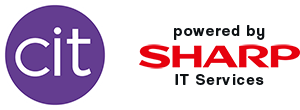James Rood, Infrastructure Support Analyst, takes a look back at the technical trends of 2015.
Wearables
Wearables have come a long way in the past couple of years, with all the major companies now producing some sort of wearable tech. Microsoft have their Band, Apple have released the Apple Watch and Google’s continued efforts with Android Wear. Now, even the fashion brands are getting involved, releasing their own Smartwatches.
Although they have sold in large volumes, reviews of the Apple Watch have actually been a bit poor. Many reviewers stating battery life is dismal, the screen turns itself off to save battery and lack of features. Since initial release, Apple have released WatchOS2. The feature list is fairly long, but in short it boasts the usual things such as “Faster App performance”. There are a few useful features, you can now reply to email from the watch (how was this not a feature in WatchOS1?) and one I really like is a feature they’re dubbing “Time Travel”. This allows you to turn the dial on the watch to push time forward and you can see what’s in your calendar at that time. Nifty! The final feature which Apple is ranting on about, and it must be important because it’s at the TOP of the web page advertising WatchOS2….New watch faces!!! Woo…
Now Android Wear has been slowly evolving since its release, and a recent update which could be revolutionary (or a flop?) is that the Android Wear OS can now receive messages and cellular calls. That’s right, your Watch could be your phone. Now I haven’t seen this in action, but the majority of functionality of a smartwatch comes from pairing it with a phone right? So what happens when you take the phone out of the equation? Does your shiny Smartwatch literally turn into a phone and a watch? Do you maintain all the functionality with calendar, fitness recording etc etc? Or would it be used in conjunction with your phone? Personally, I don’t see why you’d do that, but maybe you can think of a reason?
Finally, the Microsoft Band. Microsoft have recently released the Microsoft Band 2. This is a direct upgrade to the original Band. It features a Curved screen (for users of the original Band you will be cheering with joy at this) and a barometer sensor, giving elevation indication. It features typical hardware improvements such as faster processor but overall it’s a nice, minor improvement over the original Band. My personal verdict is if you already own a Band, stick with it. If you don’t and you want one, get the Band 2.
Gaming
2015 has been a slow year for Hardware developments in the gaming industry. Of course we’ve had the usual releases of the latest graphics cards, monitors, peripherals and the like, but in terms of revolutionary hardware we’ve not seen much. We’re still waiting on VR (Virtual Reality) technology such as Oculus’ Rift and HTC’s Vive, but these are still not released to consumers. Microsoft has recently shown off more of their unreleased Hololens, which is AR (Augmented Reality) but I really don’t see this taking off as a serious gaming platform.
We have seen a lot of movement in the “Streaming” scene however, with both Nvidia and Valve releasing their Shield and Steam Link devices respectively. These devices allow you to plug them into your TV, and ‘stream’ your game that runs on your PC over the network so you can play it on your TV.
Valve have also released their Steam Machines. This is their attempt to take on the popular consoles, such as Xbox One, PS4 and Wii U, and get PC gaming into the living room. Unfortunately, these machines still seem to carry the PC price tag, starting at around £450 and going up to £1000. These do not run Microsoft Windows, but instead run Valve’s own operating system SteamOS. These devices are very new, being released in November, and performance benchmarks show them to be severely lacking against similarly specked PC’s running Windows. To put this into numbers, some games ran up to 30FPS slower on SteamOS than they did on Windows. When you typically aim for 60FPS, that is a huge performance drop. Not a good start, but hopefully this will be fixed with future software updates.
3D printing
3D printing has exploded in the past year or so. It turned from something people only dreamed about, to being able to buy one for just a few hundred £’s and having one in your home! (Yes the cheap ones are not that great but that’s beside the point). I remember as a kid sitting at my computer downloading files and thinking “how cool would it be to download that toy” and just passed it through my brain with the usual “that will never happen” attitude. Well, here we are, 15 years later, 3D printing things in our very own living rooms!
Now, let’s face it, 3D printing in the home is just frivolous at this point, I mean what can you really 3D print at home? Not much. Nothing useful anyway. Some people use it for construction projects and that’s fine, but for the mass market? Businesses however, is where this will shine, especially healthcare. Amputees are getting 3D printed limbs, surgeons are using 3D printed implants, it’s all very exciting. I think the future will be very bright for 3D printing, when the printers themselves get more and more flexible and we are able to use more materials, rather than just building everything out of plastic, it’s a way off, but it will happen.
Cloud computing
Cloud computing is what all businesses have been talking about for the past few years. “The cloud is the next big thing!” “Everything is moving to the cloud!” “The cloud will consume us all!” Maybe that last one hasn’t been said, but the first two points are very valid. The cloud was/is the next big thing, and a lot is moving to the cloud, but not everything. It would be impossible for EVERYTHING to move to the cloud, you still need some sort of device to interact with it, be it a computer or smartphone. The cloud is also a very vague term. In essence, it’s anything that is hosted offsite. So could you count “The internet” as the cloud? Every web page you’ve ever visited? I guess so. I’d like to know who coined the term “The cloud”, because it couldn’t be further from clouds if it tried! It all relies on the internet, which mostly consists of cables underground, I’m sure there’s no clouds down there.
Anyway, news! The big news recently is Microsoft have announced UK datacentres by the end of 2016. This is fantastic news for UK based businesses where data protection laws prohibit them from storing data outside the UK, but still want to use the cloud.
Internet of things (IoT)
Internet of Things. This is the latest phrase that everyone is chatting about, but what does it mean? Well, the Internet is a network of networks, so the Internet of Things surely means “things” networking into the network, of networks. Does your brain hurt? Mine does. Essentially, it’s a fancy phrase for saying “Everything will be connected together via the internet”.
This has started to gain traction in the past 5 years. From something simple like doorbells that people access from their phones, to environment sensors detecting temperature, humidity etc and uploading that information somewhere (dare I say the cloud?). Google have their Nest range of devices which are a start of IoT as they provide internet connected Smoke Alarms and Thermostats. But the IoT is much larger than that, I see almost EVERYTHING being connected, and that really is the Internet of Things. I see sofa cushions that record how long they’ve been sat on, where the most wear is. I see doors reporting how many times they’ve been opened and closed. I see an entire house being able to identify who’s in and where they are. Sounds a bit big brother doesn’t it? But as long as we see a practical need for it, we’ll be happy to have it. The question is, who else is reading this data?



